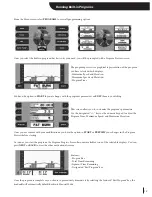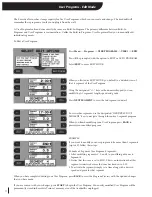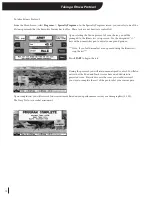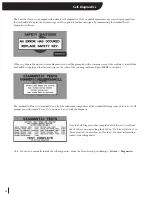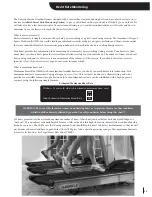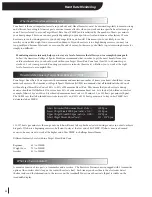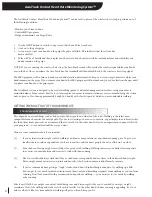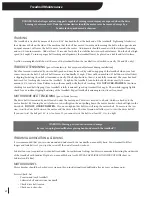
Heart Rate Monitoring
24
The Executive Trainer treadmill comes standard with a wireless heart rate monitoring device and a contact heart rate cross-
bar (see
AccuTrack Heart Rate Monitoring System
) to give you feedback on how your body is affected by your workout. We
will take a look at a few basic concepts of heart rate monitoring so you can better understand how it all works and how to
maximize its use to allow you to reach the fitness level you desire.
What is exercise intensity?
Exercise intensity is simply a measure of how hard you are working at a given time during exercise. The American College of
Sports Medicine (ACSM), the world’s leading medical and scientific authority on sports medicine and fitness, recommends
that every individual involved in an exercise program know how hard his/her body is working during exercise.
Your heart provides key information for determining how intensely you are working during exercise. Your heart rate (how
many times your heart beats per minute) is really an efficiency rating for your entire body. The number of times your heart
beats during each minute of exercise is a measurement of the intensity of the exercise. If your heart rate is low, exercise
intensity is low; if your heart rate is high, your exercise intensity is high.
What is maximum heart rate?
Maximum Heart Rate (MHR) is the maximum attainable heart rate your body can reach before total exhaustion. True
maximum heart rate is measured during a fatigue or “stress” test. This test must be done in a clinical setting and is not
practical or accessible for most people. Fortunately, your maximum heart rate can be established with a high degree of
accuracy using the following simple formula:
Estimated Maximum Heart Rate
185 beats per minute is the estimated maximum number of times John’s heart can beat before his body would fatigue or
“max out.” This number is extremely helpful because it tells us the absolute highest exercise intensity John can handle before
his body wears out. The ACSM says that during exercise, John should keep his heart rate below his maximum so that he will
not become exhausted and have to quit. In fact, the ACSM gives John a specific percentage range of his maximum heart rate
to exercise in, known as his Target Heart Rate Zone (THRZ).
WARNING: The use of this formula assumes no underlying heart or respiratory disease or other condition,
which could be adversely affected by exercise. Consult your doctor before using this chart!!!
If John is 35 years old, what is his estimated maximum heart rate?
220
-35
John’s Estimated Maximum Heart Rate =
185

